The Ezulwini Valley is one of the most beautiful places in Eswatini. It is a must stop to learn more about the culture of one of the most traditional countries on the continent. Home to the absolute parliamentary monarchy, this valley is also known as the Valley of Heaven.
There you can enjoy fantastic views that will transport you to the Swiss Alps. You will see pine forests, green meadows, waterfalls, streams, mountains and a valley that has a very important history in the country and is home to one of the most important museums in Eswatini. In addition, you can also visit the nearby Mlilwane reserve. If you want to know more, we’ll explain it here.
Located in the middle of the two great cities of the country (Mbabane and Manzini), if you go during August you will be able to contemplate one of the oldest traditions of the culture with the arrival of thousands of young people of the country who are going to visit the kings to their presidential palace. This monarchy is one of the oldest in history with many curious anecdotes that we tell you in the next article. Currently, the great inequalities in the country have called into question the untouchable power of the monarchy and, in recent months, there have been various revolts against its management that have been aggravated by the outbreak of the pandemic. You can read a story about the June 2021 protests here.
The Ezulwini Valley is a place to rest and unwind while visiting some of the different craft markets, walking through its valley, learning and understanding its culture and entering one of the most beautiful mountainous countries we have visited in Africa.
How to get there?
To reach the Ezulwini Valley from the north, you will first need to pass the country’s capital, Mbabane. You can cross it on a two-lane motorway that is the MR3. From there it is about fifteen kilometers to Lobamba, the base village to visit the various attractions of the Ezulwini Valley.
If you are coming from the south or the east, you will have to get to Manzini first and then follow the same MR3 that will also take you to Lobamba. The roads are in good condition, and from the highway itself you will find an exit named Ezulwini. Therefore, it is a path without loss.
What to do in Ezulwini Valley?
In the Ezulwini Valley, you will find many activities to do. You can rest easy for three or four days. The main population of the valley is Lobamba, where the residential palace is located. From there, it is a good place to get to know the different activities of the valley and the Mlilwane reserve. Among the different activities to be performed, we highlight:
– Visit the National Museum of Eswatini
The Eswatini National Museum is located in the town of Lobamba in the Ezulwini Valley. It opened in 1972, and it plays an important role in preserving culture and traditions for future generations.
To enter the museum, which is right next to the Parliament, you will have to pay an entrance fee of 80 lilangenis, or 80 rands. This entry includes a guide that will explain the different parts of the museum and you can ask any questions you may have.
It is a very pedagogical museum, with interactive representations of the country, traditional objects and a tour of the history of one of the cultures that have remained intact despite the stage of colonization. Besides, it has a very interesting gallery of modern African art.
Just across the road from the museum is King Sobhuza II Memorial Park, gardens with a mausoleum where King Sobhuza II is buried, and a small museum. The entrance is separate from the Eswatini National Museum.
– Hike to Sheba’s Breasts
This activity is only recommended for those who are in good condition. Sheba’s Breasts is one of the mountains that crown the Ezulwini Valley, from where you can enjoy fantastic views of the entire region.The path is short but steep, with some wooden stairs to climb the rocks and a route that is getting higher and higher.
To start the route, you can access it from Mantenga’s own reserve (this is the longest option); or if you want, you can access it from Lidwala Lodge. There, you will have to pay an entrance fee of 30 Rands per person, as the road starts right after the Lodge. We tried to access it from above, but we were going to end up in some luxury houses and it was impossible to get there; so we had to go back and get in the way of Lidwala Lodge.
The route, which takes about two hours to climb, is characterized by a steep drop of a few kilometers. You will first go through a stream that you will cross and then you will have two options: either continue through the meadow, or go through the forest. We chose the former. The road rises and it is beautiful to stop to see the Ezulwini Valley at your feet and the white clouds slowly moving above you over the blue sky. Finally, you will have to climb some wooden stairs to overcome some rocks that obstruct the path until you reach a fence at the top of the neck. Once past this fence, you can see the entire Ezulwini Valley from a 360-degree perspective.
We really enjoyed this excursion because it is a beautiful way to enjoy the views of the valley. This landscape seems to be taken from the Swiss Alps, with meadows, forests and grazing animals making this activity highly recommended if you are in the Ezulwini area.Think about bringing water, sunscreen, sportswear and good shoes! And, as an anecdote, this mountain is depicted in the book of Mines of King Solomon by the writer Sir H. Rider Haggard.
– Visit a traditional Swazi village
Visiting the traditional Swazi village is one of the star activities to do if you are in the Ezulwini Valley. In this way, you will be able to better understand the cultural, historical and traditional features of this country, its culture and its people.
Admission fee is 100 lilangenis (100 Rands), and includes Mantenga Waterfalls as well as traditional Swazi dances, which are held daily at 11:00 and 15:00. Anyway, when we went there and due to the covid, there was no dance performance, so we paid 70 lilangenis (70 Rands) per person. The entry includes a guide to the different cultural features of the Swazi people.
There you will find a village with its circular mud houses, and villages in a circle; representative as it was in previous centuries. Swazi culture is polygamous, so each woman had a different home. To differentiate the bedrooms from the common rooms or the kitchens, they used railings to indicate this. Therefore, you will see that some railings have three arms while others have four arms. In addition, the children’s homes were also separated by sex; and the man of the family had a house of his own, so that he could do whatever he pleased, without the company of his wives.
It is very interesting to be able to visit with a guide to better understand the architecture of the houses (clay for the subject of heat, and with low doors to cut off the head of the enemy if he came and crouched down); ancestral rites such as rain; family structure; and popular culture.That’s why we highly recommend this visit as it’s a great way to immerse yourself in a culture that has been very much alive for many centuries.
– See Mantenga Falls
If you are visiting the traditional Swazi village, with the same entrance you will have access to the Mantenga waterfalls. These are just a few minutes walk from the Swazi village, along a beautiful path through forests and dirt roads.
Mantenga Falls is considered one of the largest in the country. You will not be able to access it in front of the waterfalls, as the path will take you to the river and from there you will be able to see them in the distance. However, during the tour you will have different perspectives of the waterfalls. In addition, you can find different animals such as warthogs or impalas hidden in the middle of trees in the woods or in the shade.
– Visit some of their craft markets
The Ezulwini Valley is notable for being a place with plenty of local craft stalls. There you will find t-shirts, wooden animal pieces, earrings, pottery, locally made candles and lots of souvenirs.
We visited the Mantenga Craft Center, where there are also different restaurants to eat such as Vesuvio Pizza. This Craft Center is just a few hundred meters from Mantenga Lodge.
Another of the markets we visited was the Candles Center, located on the outskirts of Lobamba, where it stands out for its handmade candle shop with represented animal figures. You will also find bookshops, craft shops and eateries; although, due to the covid, when we went there half the shops were closed.
In addition, if you are looking for traditional African fabrics you can go to the city of Manzini, to Mr. Cheap Fabrik, which is where local people go to buy the fabrics with which they will then make their skirts, dresses and T-shirts.
Where to sleep in Ezulwini Valley?
In the Lobamba area, you will find many accommodation options. We then highlight two main ones which are:
– Mantenga Lodge: This is definitely the best accommodation if you want to visit the Ezulwini Valley. Run by a Spanish girl named Paloma, this lodge is close to all tourist attractions and its facilities are relentless. It has an excellent restaurant and a full breakfast buffet with spectacular views of Execution Rock. The rooms have a private toilet and shower, as well as a terrace overlooking the Mantenga Reserve, where you can enjoy the sound of birds. There is also a car park and a swimming pool where you can relax. The staff is very attentive and helpful; and the value for money is unbeatable. If you want to book, you can click here.
– Lidwala Lodge: This accommodation is located right at the foot of Sheba’s Breasts. It has different private rooms, bedrooms and also camping plots. Prices range from 190 rand per person per night for camping, to 800 rand per double room without breakfast. If you want to book, you can click here.
Our route
DAY 1: We arrived in the afternoon at Mantenga Lodge after visiting the Mlilwane reserve. We now needed to know more about the Ezulwini Valley, and Mantenga Lodge was our ideal base camp for exploring this whole area.
So we took the opportunity to have a good dinner in the Lodge restaurant, and go to bed early so we could visit different parts of the Ezulwini Valley the next day.
DAY 2: We got up early to visit a recreation of a traditional Swazi village. Before the covid pandemic, traditional dances and dances were also performed; but at the Lodge we were told they were no longer doing so due to coronavirus restrictions. So we went to the entrance which was less than 5 minutes from our accommodation.
Upon arrival, we were greeted with a guide who explained in detail the peculiarities of the structure of the Swazi people. The houses are circular and muddy, and are surrounded by a kind of railing to identify which is the kitchen or bedroom. Swazi society is polygamous, so in the division of houses we find one for every woman. The houses are characterized by being low, so they stay cooler and was the way to cut off the head of the enemy when he crouched down to enter.
The Swazi people believe in the power of their ancestors, and it is a people where dance and music also have a strong presence. Unfortunately, there was no action that day, but the guide told us that the next day there would be … No one had told us anything, so we gave the phone to our guide to confirm it. in the evening.
After visiting the traditional Swazi village, we continued walking until we reached the Mantenga waterfalls, one of the highest in the country and which are just a few minutes walk along a very beautiful route. We could see the waterfalls from the bottom, as there was no way to get to the front… But its visit was well worth it. There, we met two French girls who were traveling through South Africa and Eswatini; and that we met them on more than one occasion.
We returned to Mantenga Lodge and had lunch in a space where there is a craft market. There, there were different shops that made t-shirts, handkerchiefs, figures and homemade pieces; and also two small restaurants. Some of the stores, however, were closed due to the covid issue. After eating a good plate of pasta, we went back to the shops to buy some things, and then we took the car to our next stop: the National Museum.
The National Museum of Swaziland is one of the most beautiful museums in the country. Inside, with a very seasoned guide who touched us, we were able to take a tour of the history of this culture that has remained strong against any colonial occupation. In fact, it is one of the few countries that has maintained its traditional system of government once it became independent from the British regime. The guide told us many curiosities about the figure of the current king, for example, that he is always chosen by a group of sages, and therefore all those with a family history of Swaziland are candidates to be kings. Furthermore, the queen is not the king’s wife, but her mother and who must be consulted.
Apart from the real curiosities, we were also able to see in a more interactive format the 3 different landscapes of the country: first, the mountains in the Piggs Peak area and that is where we passed; second, the Ezulwini Valley where we were; and, third, the plain that we still lacked to know and which is characterized by having some of the most important parks in the country such as Hlane NP, or sugar cane, the main exporting food in the country.
We left the museum, which is right in front of the parliament, and quickly headed for a craft market known primarily for its candles. Along the way, we passed the official residence of the country’s kings, a private space where they have all the luxuries, while many people in the country are below the poverty line. And, more, after this pandemic…
We arrived at the craft market to visit a candle shop with different figures and animals. There were some very beautiful ones! Then we took the opportunity to shop and returned to Mantenga Lodge before it started to rain.
In the evening, we went to look for some pizzas in the craft market where we had been for lunch, and we ate them inside a room while it was raining outside. Recently, a large group of Germans had arrived at the Lodge; and the guide had not yet written to us confirming whether or not there was a performance the next day. So we went to bed waiting for an answer from him…
DAY 3: In the morning, we got up very early and saw a message: finally, no action was being taken. So, Sílvia and we went up to Sheba’s Breast, a mountain from where we have very beautiful panoramic views of the whole valley.
We took the car and dropped it off at Lidwala Lodge, the starting point for the tour. We tried to walk along a path that surrounded this hotel and passed through luxury homes, but they all ended up right there: either in the middle of inaccessible hedges, or in a private parking lot of a luxury home. So we had no choice but to go inside the Lidwala Lodge and pay the corresponding entrance fee. We find it hard to understand how in Africa many places in nature (such as waterfalls or mountains) charge!
From Lidwala Lodge, we began to climb a path that ran along a small stream, then into rocks between us as we climbed higher and higher. The road was short but quite steep uphill. We continued walking, sometimes climbing stairs made of logs to overcome the obstacles of the big rocks, while we stopped to watch as the clouds passed quickly over us and as the landscape became more and more beautiful.
We reached the top of the hill, where we passed a small fence, and from there we were at Sheba’s Breast, a high peak from where we had stunning views of the entire valley. Really, the morning’s effort to get up early had paid off.
We returned to the Mantenga Lodge for a good breakfast accompanied by all the workers of a consulting company in the country who were gathered there, taking photographs. On the mobile phone, there was a message from the guide of the Swazi people: finally, they had done the traditional dances to a large group of German tourists who were traveling on an organized trip. In Africa, this happened to us many times: they told you yes and after all it was no, or vice versa.
It was time to say goodbye to our base camp, the Mantenga Lodge, run by a girl from Burgos named Paloma, and where we had a great time. It was time to make our way to Hlane NP, but first we would stop at the last village in the Ezulwini Valley and the country’s ancient capital, Manzini. There we stopped at Mr. Cheap Fabrik, a local fabric place where everyone goes to buy the material to make the different African garments so characteristic. We also bought some, and left behind a valley that has a history, a landscape and a spectacular beauty.

































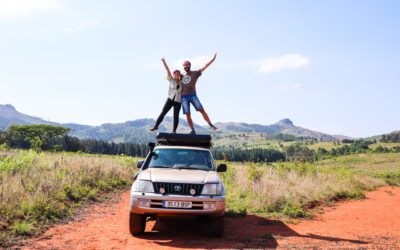
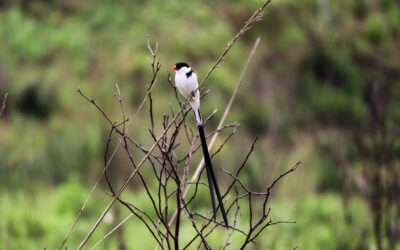
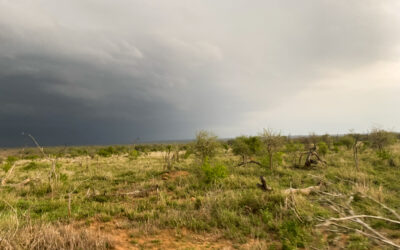
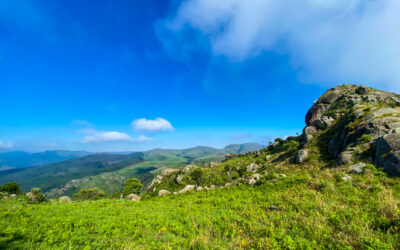
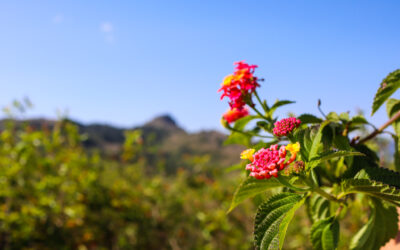
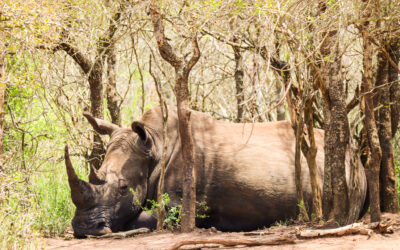

0 Comments